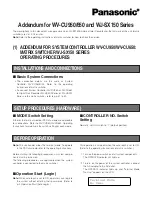
PoE Applications
This section covers the following topics:
•
PoE Overview
on page 22
•
Connect PoE Equipment in a Business Environment
on page 22
•
Connect PoE Equipment for Surveillance and Security
on page 23
PoE Overview
The switch supports 24 Power over Ethernet (PoE) ports. The switch can supply up to 30W PoE+ (IEEE
802.3at) to each port up to its total maximum PoE power budget of 190W across all active PoE+ ports.
Supplied power is prioritized according to the port order, up to the total power budget of the device. Port 1
receives the highest PoE priority, while port 24 is relegated to the lowest PoE priority.
If the power requirements for attached devices exceed the total power budget of the switch, the PoE power
to the device on the highest-numbered active PoE port is disabled to make sure that the devices connected
to the higher-priority, lower-numbered PoE ports are supported first.
Although a device is listed as an 802.3at PoE+-powered or 802.3af PoE-powered device, it might not require
the maximum power limit that is specified by its IEEE standard. Many devices require less power, allowing
all 24 PoE ports to be active simultaneously when the devices correctly report their PoE class to the switch.
Connect PoE Equipment in a Business Environment
The following figure shows an example of how you can connect PoE wireless access points, PoE VoIP
phones, and PoE surveillance equipment to the switch in a business environment.
In a small office or home office network, the blue network icon represents a router that is connected to an
Internet modem. In such a setup, you must connect one port on the switch to a LAN port on the router.
Figure 4. Sample PoE business use case
Applications
22
GS724TPv2 ProSAFE 24-Port Gigabit Smart Managed Switch with PoE+ and 2 SFP Ports






































